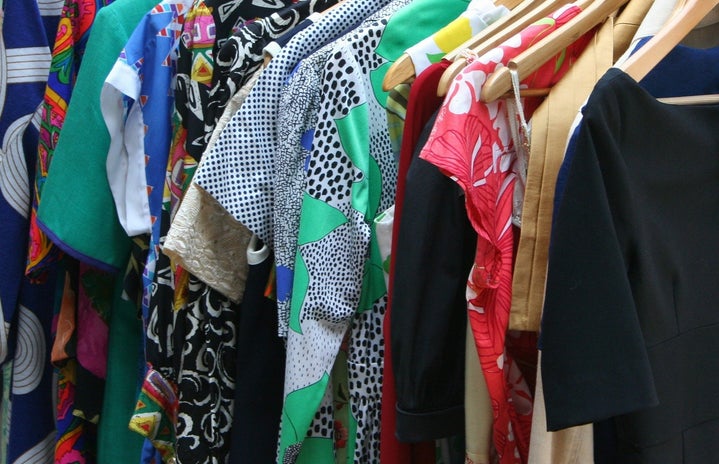When you find the perfect outfit to wear out next weekend you’ll most likely feel happy, but should you feel guilty instead? Is it possible to feel both? This coexisting feeling of happiness and guilt is something a lot of fashion consumers are beginning to face.
We all know fashion trends are cyclical. The quick coming and going of trends forces the consumer to think they need more, when in reality they simply want more. Planned obsolescence is a policy of producing goods that quickly become outdated and need to be replaced. This has been the framework of fashion but social media has drastically sped up the process.
Youth who have grown up with the internet and social media networks are put on to trends daily and have the pressure to keep up. With the use of social media, fashion consumers are more connected and there is more pressure to be innovative and diverse. In the past consumers remained up to date on what was new and hot by watching fashion shows or flipping through various fashion magazines. Now all you have to do is scroll down your news feed and you’ll see all the latest trends.
You may be wondering, could my shopping habits really be harming the Earth? The answer is yes. According to the Environmental Protection Agency more than 15 million tons of used textile waste is generated annually in the United States. According to data from Greenpeace, the fashion industry produces 92 million tons of waste annually which is more than toxic e-waste produces. 92 million tons is 4% of the world’s waste annually. As the consumer’s purchases steadily increase, so does the waste.
Where does this waste go and how does it get there?
Companies have implemented a number of persuasive marketing techniques such as encouraging consumers to recycle clothing or sell them on sites such as Depop. However, it has come out that companies such as Burberry and H&M have used more harmful techniques. Merchandise that is never sold, is outdated or damaged becomes warehoused as dead stock and then brands incinerate and shred their dead stock in private. This technique is not new to the industry but don’t feel bad if this is the first time you’re hearing about it.
Consumers are often left in the dark to the harmful practices that companies employ. One reason that companies dispose of their products in this manner is to preserve product scarcity and brand exclusivity.
How do you manage to keep your closet up to date and remain environmentally conscious?
-
Thrift shop! Thrifting is a great way to satisfy your retail therapy needs. Buying second hand clothes keeps those pieces from ending up in a landfill and polluting the environment.
-
Question your retailers. If you want to prioritize sustainability avoid brands that use non-biodegradable materials and toxic chemicals. Linen and organic cotton are a great alternative.
-
Shop in person! This may be the hardest step for some as online shopping has revolutionized the experience. However, if you can not go in store and need to have items delivered, find eco-conscious brands that use sustainable delivery practices.
-
Don’t buy fast fashion! Social media or Instagram culture has contributed heavily to this environmental crisis. Sadly, this means no more Fashion Nova but producing new products is simply not eco friendly.
-
Be an outfit repeater! Don’t be afraid to work with what you have. You can also mix and match different pieces and create new outfits. Reuse, reduce, and recycle.
I’m not saying never go shopping again, but try not to spend so much money on unsustainable pieces. Be an outfit repeater; break the trend and save the planet.





